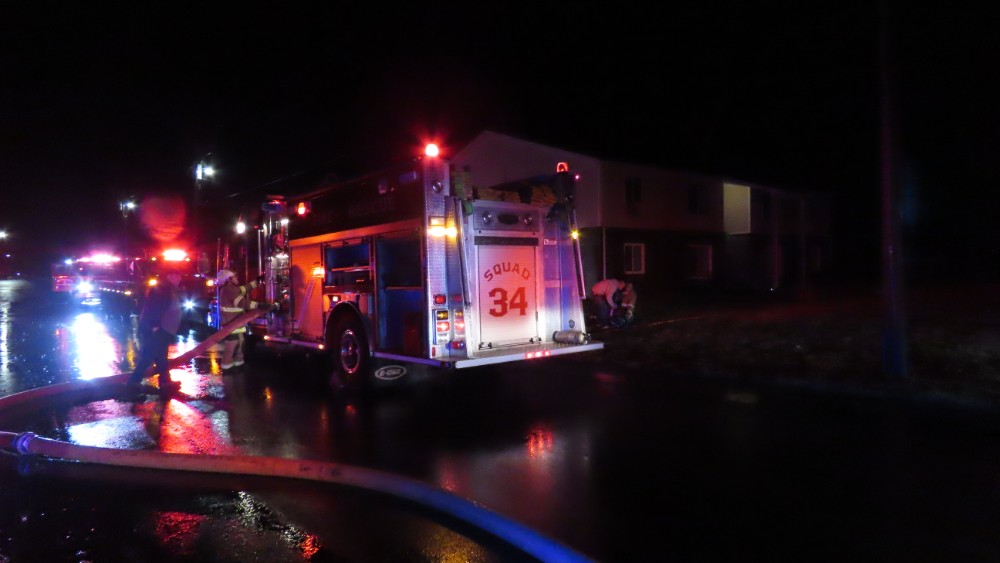Nocturnal tornadoes, as they are called, are like nightmares that have come to life. They strike under the cover of darkness and are often among the most deadly weather phenomenon. As a matter of fact, Kentucky is number 3 in the nation for having nighttime tornadoes.
Severe weather can strike day or night, so knowing safety tips for overnight severe weather could be the difference between life and death. These nocturnal storms are different from their daytime  brethren and we still don't understand how and why they form. Nighttime thunderstorms can be more unpredictable than hurricanes. And they can be just as fierce, unleashing flash floods, violent winds, and thousands of lightning flashes within minutes.
brethren and we still don't understand how and why they form. Nighttime thunderstorms can be more unpredictable than hurricanes. And they can be just as fierce, unleashing flash floods, violent winds, and thousands of lightning flashes within minutes.
The storms often stretch across entire states and have caused billions of dollars in damage and killed hundreds of people in the United States in recent decades. And yet how nighttime thunderstorms form remains a mystery. Unlike daytime thunderstorms, which are fairly well understood, forecasters still struggle to predict when a nighttime thunderstorm will spawn severe weather. Meteorologists know where the storms will form but not, for the most part, how bad they'll get. Clear blue skies can give way to a nighttime thunderstorm cluster that's producing widespread heavy rainfall and high winds in a matter of hours. So what do you need to do to get ready for nighttime events? The biggest thing to know with these types of storms is to prepare prior to the overnight storms.  Safety tips for severe events include closely monitoring all weather alerts and warnings issued for your location. Make sure you go to a predetermined safe location when taking action is advised. During the overnight, you may suddenly be awoken by a warning and may have to take action in a timely manner.
Safety tips for severe events include closely monitoring all weather alerts and warnings issued for your location. Make sure you go to a predetermined safe location when taking action is advised. During the overnight, you may suddenly be awoken by a warning and may have to take action in a timely manner.
A charged cell phone, a battery-powered weather radio, a flashlight, bottled water, closed-toed shoes and a big puffy blanket are crucial to have during nocturnal severe weather outbreaks. Blankets or even a mattress can be used to shield your body and head from flying debris. Leading up to the event, make sure all cell phones and weather notification devices are fully charged. If there is a community Tornado Safe Shelter, plan on how to get there in a timely fashion. If you are planning on constructing your own shelter, keep in mind ease of access. It is pretty hard to get your family up at 3 AM and getting them to trudge outside to a shelter entrance with all types of weather going on. So, access from inside the house is always the best option. These storms will be hard to identify at night and may result in underestimating the true strength of a storm. Therefore, it is important to adhere to all warnings issued for your location and to take appropriate action when necessary.
Nocturnal tornadoes are particularly dangerous for several reasons," says my friend, Dr. Greg Forbes (find him on Facebook), severe weather expert at The Weather Channel. "One is that it’s nearly impossible to see the tornado coming, so getting and heeding warnings is crucial. Another is that people are often asleep and caught unaware. People are usually at home, often in structures that are not as sturdy as their place of work. Mobile homes are particularly vulnerable." "There have been many infamous nocturnal tornadoes," according to Dr. Forbes. "One struck Evansville, Ind., on Nov 6, 2005, nearly all of the fatalities in mobile homes.” The only thing more frightening than the sight and sound of a tornado approaching is one that strikes while you're asleep. It comes in the middle of the night, enveloping your neighborhood with dangerous winds, swirling debris, and possibly deadly consequences. As our spring severe weather season begins to peak, proper planning and good judgement may save you and your family’s life. Please feel free to comment on this and be sure to hit the like button at the bottom.
Dr. Greg Forbes (find him on Facebook), severe weather expert at The Weather Channel. "One is that it’s nearly impossible to see the tornado coming, so getting and heeding warnings is crucial. Another is that people are often asleep and caught unaware. People are usually at home, often in structures that are not as sturdy as their place of work. Mobile homes are particularly vulnerable." "There have been many infamous nocturnal tornadoes," according to Dr. Forbes. "One struck Evansville, Ind., on Nov 6, 2005, nearly all of the fatalities in mobile homes.” The only thing more frightening than the sight and sound of a tornado approaching is one that strikes while you're asleep. It comes in the middle of the night, enveloping your neighborhood with dangerous winds, swirling debris, and possibly deadly consequences. As our spring severe weather season begins to peak, proper planning and good judgement may save you and your family’s life. Please feel free to comment on this and be sure to hit the like button at the bottom.






